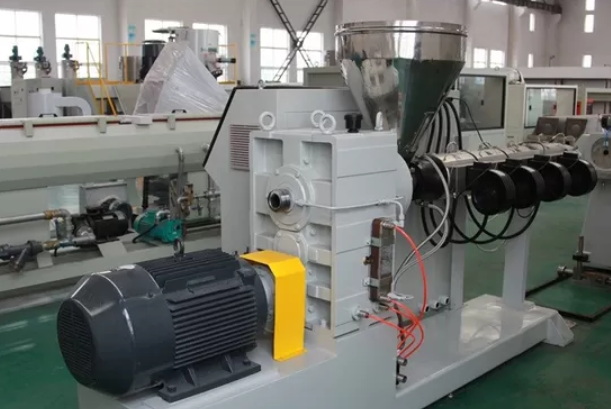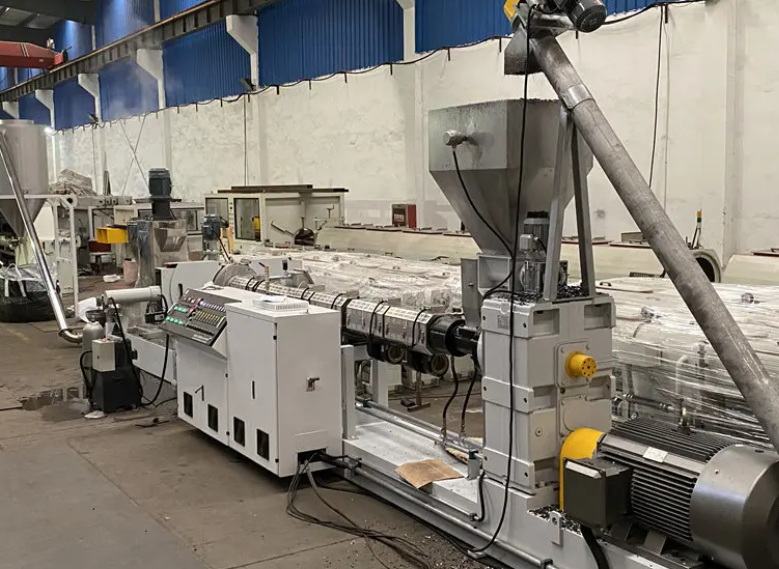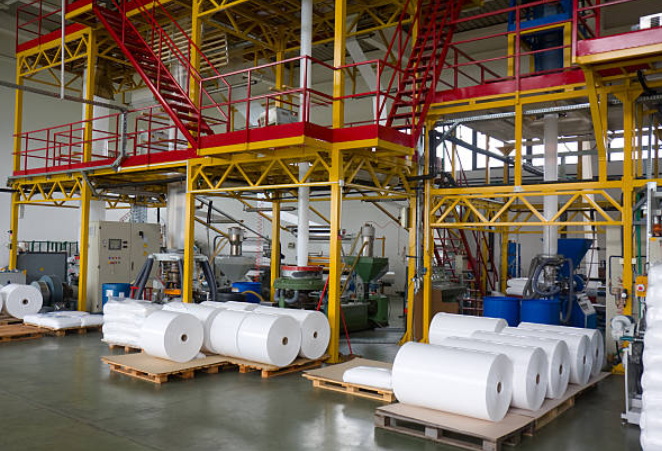Content Menu
● Introduction to Extrusion Technology
>> Key Components of Extrusion Equipment
● Benefits of Extrusion Equipment
>> Nutritional Enhancement
>> Process Flexibility and Efficiency
>> Product Variety
● Applications of Extrusion Equipment
>> Human Food Production
>> Animal Feed Production
● Future Prospects and Innovations
>> Sustainability and Environmental Impact
>> Technological Advancements
● Case Studies and Examples
● Challenges and Opportunities
● Conclusion
● FAQs
>> 1. What are the main components of extrusion equipment?
>> 2. How does extrusion enhance nutritional quality?
>> 3. What types of products can be made with extrusion equipment?
>> 4. What are the advantages of twin-screw extruders over single-screw extruders?
>> 5. How does extrusion technology contribute to sustainability?
● Citations:
Extrusion equipment has revolutionized the food industry by offering a versatile, efficient, and cost-effective method for producing a wide range of food products. From snacks and cereals to pasta and pet food, extrusion technology plays a pivotal role in enhancing nutritional quality, improving product texture, and increasing production efficiency. This article delves into the benefits of extrusion equipment in the food industry, exploring its components, applications, and future prospects.

Introduction to Extrusion Technology
Extrusion technology involves the conversion of raw ingredients into finished products through a mechanical and thermal process. This process typically entails forcing a mixture of ingredients through a die to form a desired shape and texture. The high-temperature, short-time (HTST) technique aids in microbial condemnation reduction and enzyme inactivation, ensuring food safety and compliance with regulatory standards.
Key Components of Extrusion Equipment
1. Feed System: Ensures consistent feeding of raw materials into the extruder.
2. Extruder Barrel: Where mixing, heating, and shearing occur.
3. Screw(s): Convey and knead ingredients.
4. Die: Shapes the extrudate into the desired form.
5. Cutter: Cuts the extruded product to length.
The design of these components can significantly affect the final product quality. For instance, the screw configuration can influence the degree of mixing and heat transfer, while the die design determines the product's shape and texture.
Benefits of Extrusion Equipment
Nutritional Enhancement
Extrusion processing enhances the nutritional quality of food by increasing protein digestibility, reducing anti-nutritional factors, and improving starch digestibility. It also allows for the incorporation of dietary fiber and fortification with vitamins and minerals. This is particularly beneficial for producing infant foods and nutritional supplements.
Process Flexibility and Efficiency
Twin-screw extruders offer more process flexibility and better mixing capabilities compared to single-screw extruders. They can handle various processing functions simultaneously, such as combining, melting, mixing, cooking, and venting. This flexibility allows manufacturers to produce a wide range of products with different textures and nutritional profiles.
Product Variety
Extrusion technology allows for the production of a diverse array of products, including snacks, cereals, pasta, pet food, and textured vegetable protein (TVP). It enables precise control over product texture, shape, and nutritional content. For example, extrusion can create puffed snacks with varying degrees of crispiness or produce cereals with specific shapes and flavors.

Applications of Extrusion Equipment
Extrusion equipment is widely used in both human food and animal feed production. It is particularly beneficial for creating pre-cooked and instant flours, which are popular in consumer markets.
Human Food Production
- Snacks: Extrusion is used to produce puffed snacks, crackers, and chips. These snacks can be flavored and textured to meet consumer preferences.
- Cereals: Breakfast cereals are often made using extrusion technology. The process allows for the creation of various shapes and textures, from flakes to puffs.
- Pasta: Extruded pasta products include macaroni and spaghetti. Extrusion provides uniformity and consistency in pasta shape and texture.
Animal Feed Production
- Pet Food: Extruded pet food offers precise control over nutritional content. This is crucial for ensuring that pets receive balanced diets tailored to their life stages and health conditions.
- Livestock Feed: Extrusion technology is used to produce feed for poultry and cattle. It helps improve feed efficiency and nutritional value, contributing to healthier livestock.
Future Prospects and Innovations
The future of extrusion technology in the food industry looks promising, with ongoing innovations aimed at improving efficiency, sustainability, and product diversity. Advances in automation and AI-driven processing are expected to enhance production efficiency and product quality. Additionally, there is a growing interest in using extrusion to process plant-based proteins and other sustainable ingredients, aligning with consumer trends towards healthier and more environmentally friendly food options.
Sustainability and Environmental Impact
Extrusion technology contributes to sustainability by minimizing environmental impact through efficient energy use and the ability to process diverse raw materials, including by-products from other industries. This reduces waste and supports circular economy practices. Furthermore, extrusion can help reduce water usage and lower greenhouse gas emissions compared to traditional cooking methods.
Technological Advancements
Recent technological advancements include the integration of sensors and data analytics to monitor and optimize the extrusion process in real-time. This allows for better control over product quality and reduces the risk of defects. Moreover, advancements in material science are enabling the development of new extrusion dies and screw designs that improve efficiency and product variety.
Case Studies and Examples
Several companies have successfully implemented extrusion technology to enhance their product offerings and improve production efficiency. For instance, a leading snack manufacturer used twin-screw extruders to develop a new line of puffed snacks with enhanced nutritional content. Another example is a pet food company that utilized extrusion to create customized diets for pets with specific health needs.
Challenges and Opportunities
Despite the benefits, there are challenges associated with extrusion technology, such as high initial investment costs and the need for skilled operators. However, these challenges also present opportunities for innovation and growth. As the demand for sustainable and nutritious food products increases, companies investing in extrusion technology can capitalize on emerging trends and consumer preferences.
Conclusion
Extrusion equipment has transformed the food industry by providing a versatile, efficient, and nutritious method for producing a wide range of food products. Its ability to enhance nutritional quality, improve product texture, and increase production efficiency makes it an indispensable tool in modern food processing. As technology continues to evolve, extrusion is likely to play an even more significant role in shaping the future of the food industry.

FAQs
1. What are the main components of extrusion equipment?
The main components include the feed system, extruder barrel, screw(s), die, and cutter. Each component plays a crucial role in the extrusion process.
2. How does extrusion enhance nutritional quality?
Extrusion enhances nutritional quality by increasing protein digestibility, reducing anti-nutritional factors, and improving starch digestibility. It also allows for fortification with vitamins and minerals.
3. What types of products can be made with extrusion equipment?
Extrusion equipment can produce snacks, cereals, pasta, pet food, textured vegetable protein (TVP), and functional ingredients.
4. What are the advantages of twin-screw extruders over single-screw extruders?
Twin-screw extruders offer more process flexibility, better mixing capabilities, and can handle a wider range of mixed formulas compared to single-screw extruders.
5. How does extrusion technology contribute to sustainability?
Extrusion technology contributes to sustainability by minimizing environmental impact through efficient energy use and the ability to process diverse raw materials, including by-products from other industries.
Citations:
[1] https://cfaminternational.com/how-extrusion-has-changed-the-food-processing-industry/
[2] https://cfaminternational.com/advantages-of-twin-screw-extrusion-in-the-food-processing-industry/
[3] https://sga.com.au/extrusion-processing/
[4] https://www.alamy.com/stock-photo/extrusion-food.html
[5] https://www.youtube.com/watch?v=29U8Z-GW92k
[6] https://www.yjing-extrusion.com/what-is-food-extrusion-equipment-and-how-does-it-work.html
[7] https://www.foodmachineryint.com/everyhing-you-need-to-know-about-food-extruder.pdf
[8] https://en.engormix.com/feed-machinery/extrusion/why-food-technology-extrusion_a54524/
[9] https://www.foodmachineryint.com/everyhing-you-need-to-know-about-food-extruder/
[10] https://www.tandfonline.com/doi/full/10.1080/16070658.2019.1583043
[11] https://cfaminternational.com/the-role-of-food-extrusion-in-food-processing/
[12] https://en.wikipedia.org/wiki/Food_extrusion
[13] https://millingandgrain.com/extrusion-brings-versatility-to-food-industry-21219/
[14] https://www.newfoodmagazine.com/article/11058/a-closer-look-at-extrusion-and-its-benefits-for-the-food-industry/
[15] https://www.sciencedirect.com/science/article/pii/S2666833521000095
[16] https://www.shutterstock.com/search/food-extruder
[17] https://www.istockphoto.com/photos/food-extrusion
[18] https://www.shutterstock.com/search/food-extrusion-machine
[19] https://www.youtube.com/watch?v=CTNKNDcZ9aA
[20] https://www.gettyimages.hk/%E5%9C%96%E7%89%87/food-extrusion






















